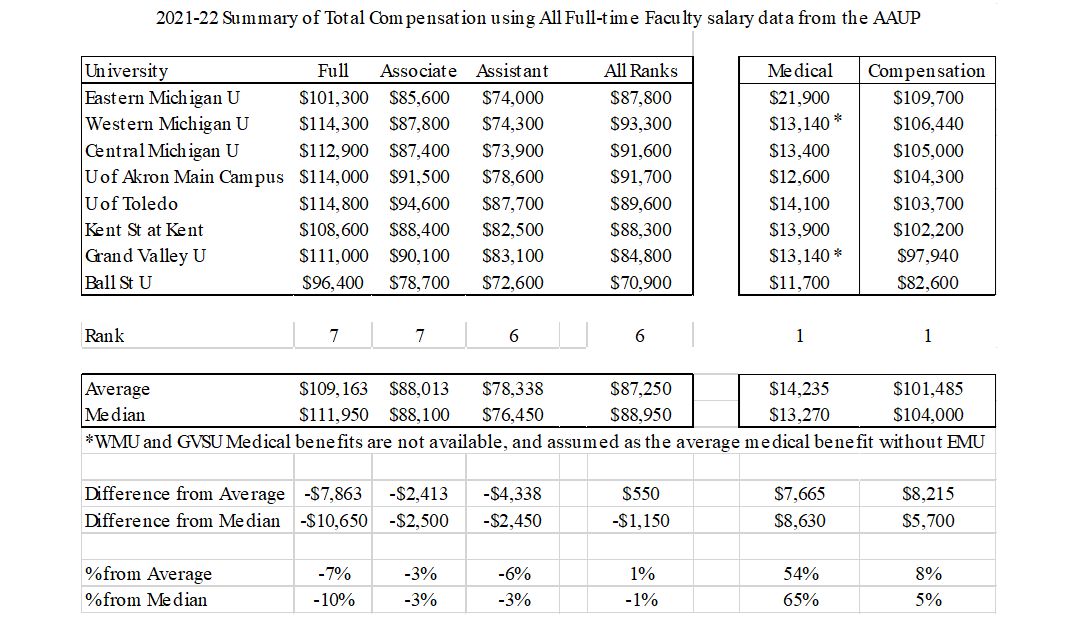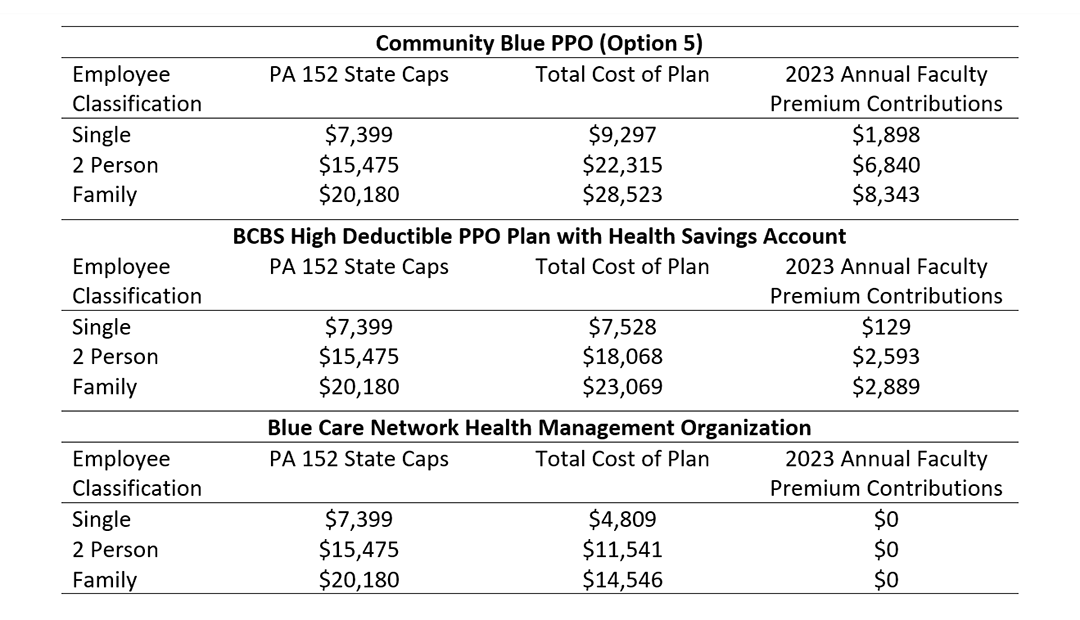University Proposals on Key Unresolved Issues
There has been a lot of talk about what the University has proposed to the AAUP during these negotiations. What are the University’s last proposals on the key unresolved issues?
Article V - Association Rights
The University has offered to provide the AAUP with the same amount of released time it has in the expired contract. The University has rebalanced this release time to ensure the AAUP has a grievance officer for the summer. The thirty (30) credit hours afforded in the expired contract has been rebalanced so that twenty-four (24) credit hours of released time are provided during the Fall and Winter semesters (twelve (12) credit hours in each semester is the equivalent of one Full-time Equivalent Faculty position per semester), and six (6) hours during the summer.
Article VII - Grievance Procedure
The University has proposed to allow the Grievance Officer to determine if they need an additional representative during the Step I and Step II meetings. To further facilitate the resolution of grievances, the University’s proposal permits a grievant who is on leave or who is unavailable during summer term for in-person meetings to attend the meeting remotely.
Article XIII - Faculty Participation in Governance
The University is committed to the tenets of shared governance. In addition to the language in the expired contract, the University has proposed that the Faculty Senate and the University reassess their committees including members’ terms of service, expertise required of the committee members, and areas in Academic and Student Affairs in which the committee is expected to provide faculty input. This process may also identify revising, merging or eliminating existing committees and creating new committees. This is intended to strengthen understanding and communication between the parties in the furtherance of a shared sense of commitment to finding solutions that will best enable us to advance together the mission of the University and the students served. These actions are intended to build trust, understanding and goodwill across the University.
The University has also committed to work with the AAUP in implementing an electronic work flow system to enhance the tracking of DED and DID documents as they progress through the approval process.
Article XIV - Faculty Appointments, Faculty Participation in Graduate Programs, Reappointments, Tenure and Promotion
The University supports our faculty throughout their careers at EMU. To that end, the current agreement provides a Full Professor Salary Adjustment opportunity every ten (10) years after obtaining the rank of Full Professor. This is an opportunity that only one other institution in Michigan provides. The University has proposed no change to this article.
Article XVIII - Compensation
The University has offered wage increases competitive with our peer institutions. The University has proposed a five-year contract providing for a $2,000 increase to faculty base salary in year one (in addition to $3,600 supplement to base salary for benefit plan changes in Article XIX), followed by 2% increases in years two and three, and 2.5% increases in years 4 and 5. These increases either meet or exceed those of our peer universities. The University has offered a prorated summer pay provision to help students on the path to graduation.
Article XIX - Fringe Benefits
The University has stressed the need for Faculty to share in the cost of their healthcare. Currently, Faculty are 36% of the total employees covered under the University health plans, yet they are responsible for 49% of the cost associated for these plans.
EMU’s faculty healthcare plans were last modified in 2012. This has resulted in current compensation and healthcare benefits being out of balance with peer institutions. As shown below, EMU faculty total compensation is $8,215 above the average peer institution and highest among the peers.

Faculty healthcare plans and contributions have not been aligned with PA 152 which the University has proposed to be addressed.
Under Public Act 152, the State of Michigan has limitations on the amount a public university can pay for healthcare. The State of Michigan has set forth maximum amounts a public employer may offer to a medical health plan, including the payments for reimbursement of co pays, deductibles, or payments into health savings accounts, flexible savings accounts or similar accounts used for health savings. This is driving the University’s efforts to align the faculty health care packages with those of other employees on campus.
In its proposal, the University has offered the AAUP three health care options: Community Blue PPO (Option 5), BCBS High Deductible PPO Plan with Health Savings Account (HSA), or Blue Care Network HMO (Healthy Blue Living). There is no change to how or what the plans cover -- the network of doctors and hospitals that provide services, and the wide range of treatments and care, remain the same. The plans offered by the University, their costs, and the premium contributions the University has proposed be paid by faculty are as follows:

Community Blue PPO (Option 5) | |||
Employee Classification | PA 152 State Caps | Total Cost of Plan | 2023 Annual Faculty Premium Contributions |
Single | $7,399 | $9,297 | $1,898 |
2 Person | $15,475 | $22,315 | $6,840 |
Family | $20,180 | $28,523 | $8,343 |
|
|
|
|
BCBS High Deductible PPO Plan with Health Savings Account | |||
Employee Classification | PA 152 State Caps | Total Cost of Plan | 2023 Annual Faculty Premium Contributions |
Single | $7,399 | $7,528 | $129 |
2 Person | $15,475 | $18,068 | $2,593 |
Family | $20,180 | $23,069 | $2,889 |
|
|
|
|
Blue Care Network Health Management Organization | |||
Employee Classification | PA 152 State Caps | Total Cost of Plan | 2023 Annual Faculty Premium Contributions |
Single | $7,399 | $4,809 | $0 |
2 Person | $15,475 | $11,541 | $0 |
Family | $20,180 | $14,546 | $0 |
Also, recognizing the importance of salary in total compensation, the University is offering faculty a base salary supplement for benefit plan conversion in the amount of $3,600 (in addition to the $2,000 increase to base salary in Article XVIII).
Figures 1-4 illustrate faculty salary increases in year one based upon their healthcare choice under the University’s healthcare proposal.

Figure 1. This illustrates the financial options available to a faculty member selecting single-person coverage.

Figure 2. This illustrates the financial options available to a faculty member selecting two-person coverage.

Figure 3. This illustrates the financial options available to a faculty member selecting family (3 or 4 persons) coverage.

Figure 4. This illustrates the financial options available to a faculty member selecting family (5+ persons) coverage.
Article XX – Retirement Options and Benefits
Under the University’s proposal, a 403(b) defined contribution plan, a 403(b) supplemental plan and a 457(b) deferred compensation plan will be offered to Faculty. In addition, the 403(b) and the 457(b) plans will now include Roth and non-Roth options.
Faculty will continue to receive an 11% contribution into their chosen defined contribution plan(s).
Faculty Salary Equity (University Proposal)
The University has proposed contracting a 3rd party to perform a faculty salary equity study.
Accommodations for Faculty Members with Disabilities (Response to AAUP Proposal)
The University is committed to all our employees in providing accommodations for our employees who have a disability. The University’s policy and processes are located on EMU’s University Human Resources website for all employees.
Accommodations for Faculty Members with Disabilities
Research/Creative Release Program (University Proposal)
The University research/creative release program that was introduced in the last contract extension and implemented this year recognizes the importance of designated time needed to engage in scholarly/creative activity. The University has proposed the addition of a faculty appeal process if the faculty dossier is denied in the approval process by the personnel committee, department head or dean. The University also proposed adding criteria to evaluate research/creative activities that are not present on the major or minor list of activities. Under the proposal, the new criteria will be inserted into Department Evaluation Documents.
Research/Creative Release Program [PDF]
Enrollment Incentive (University Proposal)
The University understands that faculty are integral to the recruitment and retention of students. To support their efforts, the University has proposed giving faculty a $1,000 one-time bonus if the University exceeds the preceding year’s student credit hour production during the fall and winter semesters by 2% and the average class size for the University is at least 25 students. This incentive is paid for every 2% increase in student credit hours compared to the previous academic year if the average class size for the University is at least 25 students.
Duration and Amendment
The University continues to seek a five-year agreement. A long-term agreement would be in everyone’s best interest and will provide a sense of stability for the faculty. This will assist in budget planning as the institution struggles with increasing cost and declining enrollment.
